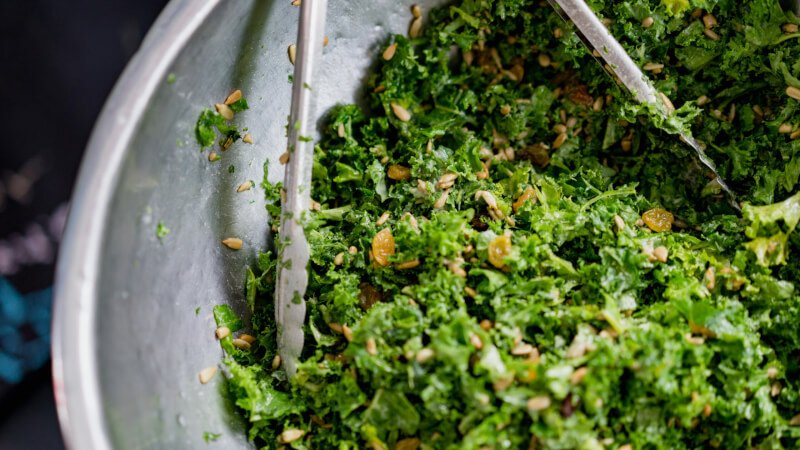Are you considering keeping chickens as pets for your family? If so, this article is the perfect guide for you! Whether you have a spacious backyard or a small urban living space, keeping chickens can be a rewarding and enjoyable experience. From selecting the right breed to providing them with a comfortable home, this family guide will help you navigate through all the essential aspects of raising chickens. Get ready to embark on a delightful journey of feathered friends and learn how to create a nurturing environment for your new additions!
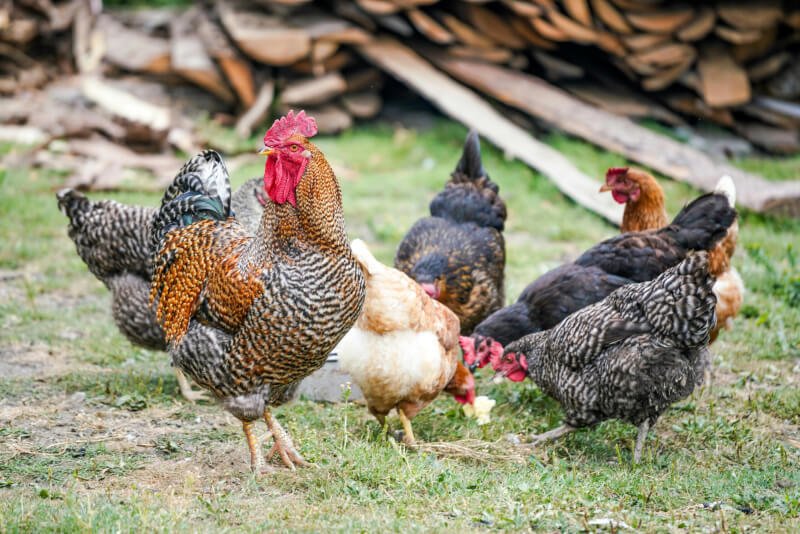
Choosing the Right Breed
Considerations for Selecting Chicken Breeds
When choosing the right breed of chicken for your family, there are several factors to consider. First and foremost, think about the purpose for keeping chickens. Are you primarily interested in having fresh eggs for your family? Or are you looking for chickens that can also provide meat? Different breeds have different strengths in these areas.
Another consideration is the climate in your area. Some chicken breeds are better suited for cold climates, while others thrive in warmer regions. Researching the specific needs and tolerances of different breeds will help you determine which ones are most suitable for your location.
Additionally, think about the temperament of the breed. If you have small children, you may want to choose a breed that is known for being friendly and gentle. On the other hand, if you have a large property and are looking for chickens that can help control pests, you might want to consider more active and alert breeds.
Popular Chicken Breeds for Families
For families looking to keep chickens, there are several popular breeds that are known for their suitability as pets and for their egg-laying abilities. One such breed is the Rhode Island Red. These birds are known for their excellent egg production and are also quite hardy, making them a great choice for beginners.
Another popular breed is the Sussex. These chickens are easy to handle, have a calm disposition, and are known for their high egg-laying potential. The Sussex breed comes in various color variations, adding an aesthetic appeal to your flock.
If you’re looking for a smaller-sized chicken breed, the Silkie is a fantastic choice. These chickens have soft and fluffy feathers, giving them an adorable appearance. Silkies are also known for their friendly and docile nature, making them great companions for children.
Finding Local Breeders or Hatcheries
To find local breeders or hatcheries, consider asking around in your local community. Many rural areas have farms that specialize in breeding chickens and other livestock. These experienced breeders can provide you with advice and guidance on choosing the right breed for your family.
You can also check online platforms and forums dedicated to poultry enthusiasts. These platforms often have listings or discussions about local breeders or hatcheries. Additionally, visiting agricultural fairs or poultry shows in your area can be a great way to connect with breeders and see different chicken breeds in person.
Building a Coop
Coop Size and Design
When it comes to building a coop for your chickens, size and design are crucial factors to consider. The coop should provide enough space for your chickens to move around comfortably and engage in natural behaviors such as scratching and perching. As a general guideline, allow for at least 4 square feet of coop space per chicken.
In terms of design, a well-ventilated coop is essential to maintain good air quality and prevent the buildup of moisture, which can lead to health issues. Consider including windows or vents that can be opened or closed depending on the weather.
Another important aspect of coop design is nesting boxes. Provide one nesting box for every 4-5 hens, and make sure they are easily accessible for both the chickens and yourself when collecting eggs.
Materials and Tools Needed
To build a coop, you will need a variety of materials and tools. Common materials include wood for the frame and walls, sturdy wire mesh for windows and vents, and roofing material to protect the coop from the elements.
Additionally, you will need basic tools such as a saw, hammer, nails, screwdriver, and measuring tape. It’s also helpful to have a level and a drill on hand.
Before starting construction, make sure to choose materials that are safe for your chickens. Avoid using treated wood or toxic paints, as these can be harmful if ingested by the chickens.
Safety Measures to Consider
When building a coop, it’s essential to consider safety measures to protect your chickens from potential predators. Make sure the coop is secure and predator-proof by using strong wire mesh and burying it at least a foot deep around the perimeter to prevent digging.
Installing a predator-proof latch on the coop door is also crucial. Raccoons, foxes, and other predators are clever and persistent, so it’s important to invest in a latch that they can’t easily manipulate.
Additionally, consider predator-proofing the coop from above. Installing a secured roof or wire mesh can prevent aerial predators such as hawks or owls from accessing your chickens.
Lastly, consider adding lighting to the coop to deter predators. Motion-activated lights or timers can help keep nocturnal predators away, providing an added layer of protection for your flock.

Preparing the Yard
Providing Sufficient Space
Before bringing home chickens, it’s important to ensure that you have enough space in your yard for them to roam and forage. Each chicken should have a minimum of 10 square feet of outdoor space to thrive and exhibit natural behaviors.
If you have a large property, you may choose to free-range your chickens. Free-ranging allows the birds to roam freely and forage for insects and plants. However, it’s important to check local regulations and potential hazards in your area, such as busy roads or nearby predators, before allowing chickens to free-range.
Fencing and Predator Protection
To keep your chickens safe and secure, proper fencing is crucial. Ensure that the fencing is at least six feet high to prevent the chickens from flying over. Use sturdy wire mesh with small openings to keep predators out.
Inspect the fencing regularly for any signs of damage or weakness, and repair any issues immediately. It’s also important to periodically check for any potential entry points for predators, such as gaps under gates or loose fencing.
Consider adding an electric fence to further deter predators. Electric fences can be an effective deterrent for larger predators such as raccoons or coyotes.
Creating a Dust Bath Area
Chickens naturally engage in dust bathing as a way to keep their feathers clean and control pests. To provide a suitable dust bath area, choose a well-drained spot in your yard and remove any vegetation. Simply fill the area with a mixture of sand and dry soil, ensuring that it is loose and easy for the chickens to dig in.
The dust bath area should be at least two feet in diameter and at least six inches deep. Chickens will instinctively use this area to bathe and keep their feathers healthy.
Feeding and Watering
Understanding Chicken Nutritional Needs
To keep your chickens healthy and productive, it’s important to understand their nutritional needs. Chickens require a balanced diet that includes protein, carbohydrates, fats, vitamins, and minerals.
A good-quality chicken feed serves as the foundation of their diet. Depending on the age of the chickens, you can choose from starter feed, grower feed, or layer feed. Starter feed is high in protein and is given to chicks up to 6 weeks old, while grower feed provides a balanced diet for young chickens. Layer feed is specifically formulated for hens in the egg-laying phase.
In addition to feed, chickens also enjoy a variety of treats and kitchen scraps. However, it’s important to avoid feeding them anything toxic, such as chocolate, caffeine, or avocado. Consult a reliable source or veterinarian for a list of safe and healthy treats for your chickens.
Choosing Appropriate Feed
When selecting chicken feed, it’s important to choose a reputable brand that provides a well-balanced diet. Look for feeds that are specifically formulated for the age and purpose of your chickens.
Consider purchasing organic or non-GMO feeds if you’re concerned about the use of chemical additives or genetically modified ingredients. These feeds may be slightly more expensive, but they provide peace of mind when it comes to the quality of the food your chickens consume.
Watering Systems and Maintenance
Clean and fresh water is essential for the health and wellbeing of your chickens. Provide your chickens with a constant supply of water, ensuring that it is free from debris and contaminants.
There are different watering systems available, such as gravity-fed waterers or nipple waterers. Gravity-fed waterers are simple and easy to use, while nipple waterers prevent the chickens from dirtying the water with their feet or droppings.
Regularly check the waterers to ensure they are functioning properly and clean them as needed. In hot weather, make sure to provide additional water sources or consider using a poultry waterer with a built-in cooling system.
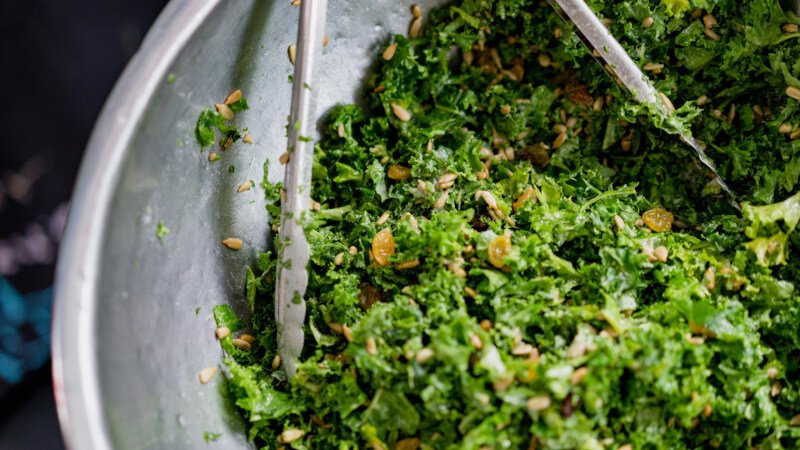
Daily Care and Maintenance
Checking for Eggs
One of the most exciting aspects of keeping chickens is collecting fresh eggs. Make it a daily habit to check for eggs in the nesting boxes. Gently lift each chicken to ensure it is not sitting on any hidden eggs.
When collecting eggs, handle them carefully to avoid cracks or breakage. It’s best to collect eggs at least once a day to ensure freshness and cleanliness.
Cleaning the Coop
Maintaining a clean coop is essential for the health of your chickens. Regularly remove old bedding, droppings, and any uneaten food. This will help prevent the buildup of harmful bacteria and diseases.
Once a month, perform a deep clean of the coop. Remove all bedding, wash the surfaces with a poultry-friendly disinfectant, and allow everything to dry thoroughly before adding fresh bedding.
Monitoring Health and Wellness
To ensure the well-being of your chickens, it’s important to monitor their health on a regular basis. Observe their behavior, appetite, and plumage for any changes that could indicate illness or injury.
Promote good health by providing clean and well-ventilated living conditions, a balanced diet, and access to fresh water. Consult a veterinarian experienced in poultry care if you notice any concerning signs or symptoms.
Handling and Training Chickens
Proper Techniques for Holding and Handling Chickens
Handling chickens correctly is essential for their safety and well-being. Approach the chickens calmly and from the front, speaking softly to reassure them. Gently pick them up by placing one hand under their breastbone and the other hand supporting their hindquarters.
If a chicken becomes agitated or afraid, avoid restraining them forcefully. Instead, allow them to move away or interact with them slowly and calmly until they feel more at ease.
Teaching Chickens Basic Commands
Chickens have the capacity to learn basic commands and routines. By using treats and positive reinforcement, you can train them to come when called or to go inside the coop at a specific time.
Choose a specific command for each action, such as “come” or “inside,” and consistently use the same command each time. Associate the command with a treat or reward, and praise the chickens when they respond correctly.
Socializing Chickens with the Family
Chickens are social animals and can become friendly and affectionate if properly socialized with their human family members. Spend time with your chickens each day, talking to them, and gently interacting with them.
Allow children to handle and interact with the chickens under supervision. Teach them to be gentle and respectful, and encourage them to bond with the birds through positive interactions and treats. This not only helps foster a sense of responsibility but also strengthens the bond between children and animals.
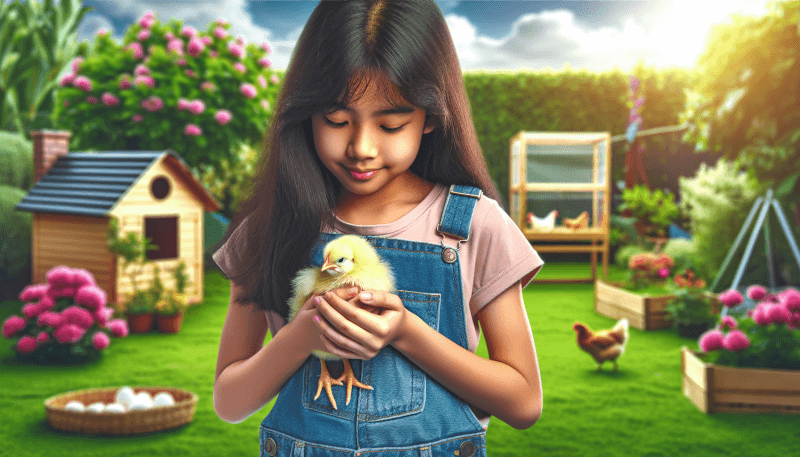
Health and Wellness Considerations
Common Chicken Illnesses and Prevention
Like any living creatures, chickens can face certain health issues. Some common illnesses include respiratory infections, parasites, and egg-related problems.
To prevent illnesses, ensure your chickens have a clean and dry living environment, a balanced diet, and regular veterinary check-ups. Practice good biosecurity measures, such as quarantining new chickens before introducing them to the existing flock, and promptly addressing any signs of illness.
Vaccinations and Veterinary Care
Consult with a veterinarian experienced in poultry care to determine if vaccinations are necessary for your chickens. Vaccinations can provide protection against certain diseases and help maintain the health of your flock.
In addition to vaccinations, regular veterinary check-ups are important for detecting any potential health issues early on. A professional can provide advice on specific health concerns and recommend appropriate treatments or preventive measures.
Maintaining a Clean and Sanitary Environment
Maintaining a clean and sanitary environment is crucial for the overall health of your chickens. Regularly clean the coop, remove any droppings or uneaten food, and provide clean bedding.
Keep the surroundings of the coop free from debris and weeds, as they can attract pests and pose a health risk to the chickens. Regularly inspect the coop for signs of damage or wear, and make necessary repairs to ensure the integrity of the structure.
Dealing with Reproduction
Understanding the Chicken Reproduction Cycle
If you have a rooster in your flock, it’s important to understand the chicken reproduction cycle. Hens will lay eggs regularly, whether or not they have been fertilized by a rooster. If the eggs are fertilized, they have the potential to develop into chicks.
To encourage reproduction, ensure your rooster and hens are mature and healthy. Provide nesting boxes and suitable nesting materials to encourage the hens to lay eggs in a safe and comfortable environment.
Managing Mating and Hatching Chicks
If you decide to allow your chickens to reproduce, it’s important to have a plan for managing mating and hatching chicks. A rooster can naturally mate with multiple hens, so consider separating him from the flock if you don’t want a large number of chicks.
If you do want to hatch chicks, separate the hen into a separate nesting area to ensure the eggs are protected and that the hen can incubate them undisturbed. Provide her with a suitable nesting material and monitor her behavior and health during this time.
Finding Homes for Surplus Chicks
If you end up with more chicks than you can accommodate or care for, it’s important to find suitable homes for the surplus chicks. Consider reaching out to local farms, educational institutions, or other chicken enthusiasts who may be interested in adopting the chicks.
Be sure to ask potential adopters about their experience with chickens and ensure they have suitable living conditions for the chicks. By finding responsible homes for surplus chicks, you can help ensure their well-being and prevent overcrowding in your own coop.
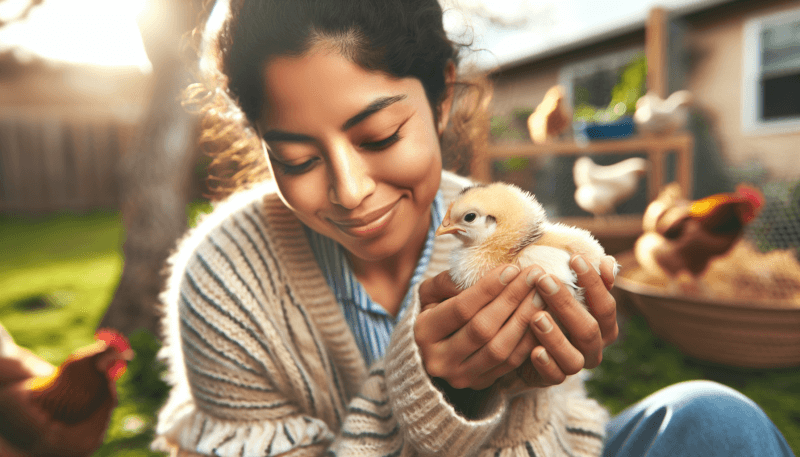
Integrating Chickens with Other Pets
Introducing Chickens to Dogs and Cats
Introducing chickens to dogs and cats should be done gradually and with caution. Start by allowing the pets to sniff and observe the chickens from a safe distance, such as through a fence or a securely closed door.
Next, allow supervised in-person interactions between the pets and the chickens. Keep the pets on a leash or in a crate initially, and observe their behavior closely. If there is any sign of aggression or predatory behavior, separate the animals immediately.
Preventing Aggression and Predatory Behavior
To prevent aggression or predatory behavior between your pets and chickens, it’s important to establish clear boundaries and ensure the safety of both parties. Provide separate feeding stations for the chickens and pets to avoid any food-related aggression.
Supervise interactions between pets and chickens closely, especially during the initial introductions. Be prepared to intervene immediately if there is any sign of aggressive behavior.
Supervising Interactions
Supervision is key when integrating chickens with other pets. Always keep a close eye on interactions between your pets and chickens, especially in the early stages. Never leave them alone together until you are confident that they can coexist peacefully.
If any signs of aggression or predatory behavior persist, it may be necessary to keep the pets and chickens separated for their safety.
Enjoying the Benefits
Incorporating Eggs into Family Meals
One of the greatest benefits of keeping chickens is the availability of fresh eggs for your family. Incorporate these eggs into your daily meals and enjoy the nutritional and flavorful benefits. Whether you’re making scrambled eggs, omelets, or baking a cake, farm-fresh eggs can enhance the taste and quality of your dishes.
Using Chicken Manure for Gardening
Chicken manure is a valuable source of organic fertilizer for your garden. Collect the manure from the coop and compost it before using it in your garden. The high nitrogen content in chicken manure helps promote healthy plant growth and improves soil fertility.
However, keep in mind that fresh chicken manure is too strong for direct application to plants. Composting it allows the manure to age and decompose, reducing the risk of burning the plants and making it safer to use.
Teaching Children Responsibility and Animal Care
Keeping chickens is a wonderful opportunity to teach children about responsibility and caring for animals. Involve them in daily tasks such as feeding, watering, and egg collection. Teach them about the needs of the chickens and the importance of maintaining a clean and healthy living environment.
By actively involving children in the care of the chickens, you can instill a sense of responsibility, empathy, and respect for animals. This hands-on experience can be a valuable life lesson that extends beyond the realm of chickens, fostering a lifelong love for and appreciation of animals.

